Enhancing Accessibility for Second Language Learners in Higher Education through Instructional Design and Digital Resources
Mengyao Du and Simranjeet Kaur
Abstract
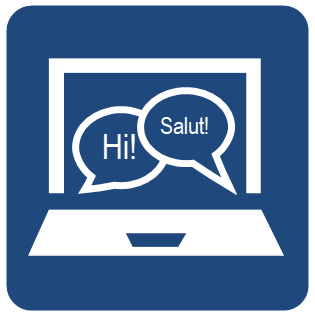 This chapter examines digital accessibility challenges faced by second language (L2) learners in higher education. It argues that accessibility must go beyond physical and sensory needs to include linguistic barriers that impact how L2 learners engage with digital learning environments. Drawing on Universal Design for Learning (UDL) and culturally responsive pedagogy, the paper identifies key barriers and offers practical strategies such as multilingual captioning, adaptive technologies, and inclusive assessment design. A case example illustrates how UDL can support linguistic inclusion. The paper concludes by calling for institutions to embed language accessibility into broader equity and inclusion efforts.
This chapter examines digital accessibility challenges faced by second language (L2) learners in higher education. It argues that accessibility must go beyond physical and sensory needs to include linguistic barriers that impact how L2 learners engage with digital learning environments. Drawing on Universal Design for Learning (UDL) and culturally responsive pedagogy, the paper identifies key barriers and offers practical strategies such as multilingual captioning, adaptive technologies, and inclusive assessment design. A case example illustrates how UDL can support linguistic inclusion. The paper concludes by calling for institutions to embed language accessibility into broader equity and inclusion efforts.
Introduction
As digital learning becomes increasingly embedded in higher education, accessibility has gained greater attention as a foundational principle of inclusive education. Yet, accessibility is often narrowly interpreted as addressing physical or sensory impairments, with less focus on linguistic and cognitive barriers. This narrow scope can marginalize second language (L2) learners—students whose primary language differs from the language of instruction—by failing to address the specific accessibility challenges they encounter in digital learning environments. These challenges include difficulty understanding academic language, navigating Learning Management Systems (LMS), and engaging with multimedia content without linguistic support.
Drawing on Universal Design for Learning (UDL) and culturally responsive pedagogical frameworks (Al-Azawei, Serenelli, & Lundqvist, 2016; Edyburn, 2010), this chapter explores how linguistic accessibility intersects with digital equity. It analyzes key barriers facing L2 learners in higher education and offers instructional design strategies and digital solutions that can create more equitable, inclusive, and accessible learning environments.
Theoretical and Policy Context of Accessibility
 Accessibility in education encompasses more than compliance with disability legislation. It involves proactively designing environments and content to support diverse learners’ full participation and success. In Ontario, Canada—where this research is situated—the Accessibility for Ontarians with Disabilities Act (AODA) outlines standards for educational accessibility. However, its primary focus remains on physical and sensory accessibility, with insufficient attention to linguistic diversity (Seale, 2013).
Accessibility in education encompasses more than compliance with disability legislation. It involves proactively designing environments and content to support diverse learners’ full participation and success. In Ontario, Canada—where this research is situated—the Accessibility for Ontarians with Disabilities Act (AODA) outlines standards for educational accessibility. However, its primary focus remains on physical and sensory accessibility, with insufficient attention to linguistic diversity (Seale, 2013).
The Web Content Accessibility Guidelines (WCAG 2.1), developed by the World Wide Web Consortium (W3C), highlight “understandability” as a core accessibility principle (W3C, 2018). From this perspective, second language barriers fall squarely within the scope of digital inaccessibility. Gonzalez (2019) argues for a broader interpretation of accessibility that includes cultural and linguistic dimensions, particularly in increasingly diverse and global academic institutions. Without such a shift, L2 learners remain structurally disadvantaged.
Moreover, accessibility is a prerequisite for educational justice. Inaccessible design reinforces systems of privilege and exclusion, undermining institutional commitments to equity, diversity, and inclusion (EDI). A truly inclusive institution must recognize that L2 learners’ challenges are not rooted in individual deficits, but in systemic inattention to linguistic equity.
Barriers to Accessibility for Second Language Learners
Linguistic Complexity in Course Materials
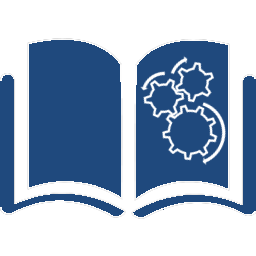 Course materials such as syllabi, lecture slides, readings, and assessments are often written in highly technical academic English. This includes complex sentence structures, discipline-specific terminology, idioms, and assumptions about cultural context (Hyland & Jiang, 2021). For L2 learners, these materials create excessive cognitive load, impeding comprehension, retention, and engagement. Without scaffolds such as plain language summaries, vocabulary lists, or visual explanations, L2 learners are less able to access core content (Sweller et al., 2019).
Course materials such as syllabi, lecture slides, readings, and assessments are often written in highly technical academic English. This includes complex sentence structures, discipline-specific terminology, idioms, and assumptions about cultural context (Hyland & Jiang, 2021). For L2 learners, these materials create excessive cognitive load, impeding comprehension, retention, and engagement. Without scaffolds such as plain language summaries, vocabulary lists, or visual explanations, L2 learners are less able to access core content (Sweller et al., 2019).
Additionally, academic discourse in higher education often reflects cultural assumptions that may be unfamiliar to international or immigrant students. For example, concepts like criticality or citation practices may not align with students’ prior learning experiences, compounding comprehension challenges. The absence of pedagogical transparency exacerbates exclusion and reinforces dominant linguistic norms.
Multimedia Content Without Language Support
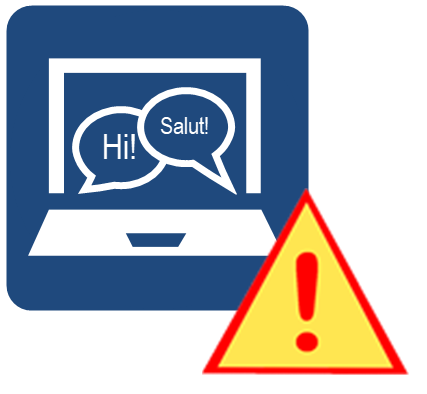 Video and audio content are ubiquitous in digital learning environments, but they are often inaccessible to L2 learners. Many instructional videos lack accurate captions or transcripts. Automatic captioning tools frequently misinterpret accents, subject-specific language, or rapid speech (Yoon & Kim, 2021). This leads to confusion, especially when videos are the sole source of essential course information. Multilingual captioning or annotations can enhance understanding (Caimi & Antonini, 2020), but they remain rare in higher education contexts.
Video and audio content are ubiquitous in digital learning environments, but they are often inaccessible to L2 learners. Many instructional videos lack accurate captions or transcripts. Automatic captioning tools frequently misinterpret accents, subject-specific language, or rapid speech (Yoon & Kim, 2021). This leads to confusion, especially when videos are the sole source of essential course information. Multilingual captioning or annotations can enhance understanding (Caimi & Antonini, 2020), but they remain rare in higher education contexts.
The lack of multimodal reinforcement—such as visual aids, gestures, or transcripts—limits L2 learners’ ability to contextualize and retain spoken content. Moreover, without multilingual subtitles or synchronized transcripts, L2 learners may experience language fatigue, leading to disengagement.
Navigation and Usability Challenges in LMS Platforms
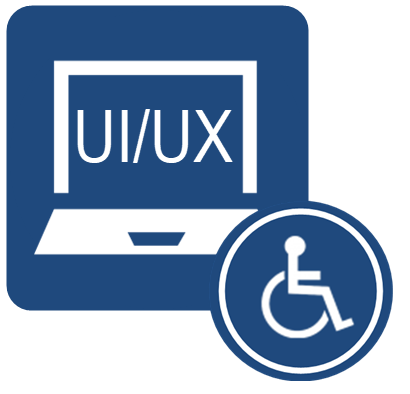 LMS interfaces such as Canvas or Moodle often use abstract icons, academic jargon, and inconsistent navigation labels. For L2 learners, such designs present major usability issues. Without multilingual interfaces or simplified language options, learners may miss key tasks or deadlines (Meyer & Wilson, 2020). Furthermore, default LMS structures tend to reflect Western academic norms, with limited regard for alternative linguistic and cognitive styles.
LMS interfaces such as Canvas or Moodle often use abstract icons, academic jargon, and inconsistent navigation labels. For L2 learners, such designs present major usability issues. Without multilingual interfaces or simplified language options, learners may miss key tasks or deadlines (Meyer & Wilson, 2020). Furthermore, default LMS structures tend to reflect Western academic norms, with limited regard for alternative linguistic and cognitive styles.
Research suggests that user-centered LMS design rarely involves non-native speakers in testing or feedback loops. As a result, platforms perpetuate the same exclusions they claim to address. Culturally sensitive and linguistically inclusive user experience (UX) design must be embedded in platform development.
Assessment Language Bias and Feedback Ambiguity
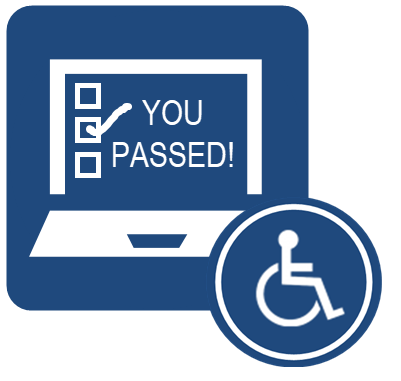 Traditional assessments often privilege native-level proficiency. Rubrics contain dense academic language, and written feedback assumes familiarity with discipline-specific expectations (Lea & Street, 2006). L2 students may receive poor grades not due to lack of knowledge, but because they cannot adequately decode the linguistic demands of an assessment. This results in distorted performance metrics and reduced learner confidence.
Traditional assessments often privilege native-level proficiency. Rubrics contain dense academic language, and written feedback assumes familiarity with discipline-specific expectations (Lea & Street, 2006). L2 students may receive poor grades not due to lack of knowledge, but because they cannot adequately decode the linguistic demands of an assessment. This results in distorted performance metrics and reduced learner confidence.
Furthermore, formative feedback that emphasizes grammar over content sends implicit messages about whose language is valued. When L2 learners receive vague or overly critical feedback, their motivation may decline, contributing to lower retention and academic success.
Inclusive Instructional Design Strategies
Universal Design for Learning (UDL)
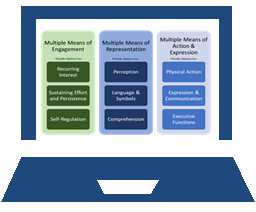 UDL emphasizes providing multiple means of representation, action, and expression (CAST, 2018). For L2 learners, this means diversifying content formats (e.g., visual, auditory, textual), integrating scaffolding strategies (e.g., simplified summaries, vocabulary glossaries), and offering flexible assessment formats. UDL also promotes learner autonomy by allowing students to access content in ways that align with their strengths. A practical example of this can be seen in a first-year psychology course at a Canadian university. The instructor adopted UDL principles by designing lecture slides with simplified summaries and visual icons, providing weekly vocabulary lists, and recording short video lectures with multilingual captions in English, Mandarin, and Arabic. Students were also given the option to complete assessments either as written reflections or visual presentations. One student from Syria shared that having access to bilingual subtitles and visual assessment options helped her better engage with the content and express her ideas confidently without the pressure of perfect academic English. This case highlights how intentional design, grounded in UDL, can empower second language learners through flexibility and linguistic inclusivity. This case highlights how intentional design, grounded in UDL, can empower second language learners through flexibility and linguistic inclusivity.
UDL emphasizes providing multiple means of representation, action, and expression (CAST, 2018). For L2 learners, this means diversifying content formats (e.g., visual, auditory, textual), integrating scaffolding strategies (e.g., simplified summaries, vocabulary glossaries), and offering flexible assessment formats. UDL also promotes learner autonomy by allowing students to access content in ways that align with their strengths. A practical example of this can be seen in a first-year psychology course at a Canadian university. The instructor adopted UDL principles by designing lecture slides with simplified summaries and visual icons, providing weekly vocabulary lists, and recording short video lectures with multilingual captions in English, Mandarin, and Arabic. Students were also given the option to complete assessments either as written reflections or visual presentations. One student from Syria shared that having access to bilingual subtitles and visual assessment options helped her better engage with the content and express her ideas confidently without the pressure of perfect academic English. This case highlights how intentional design, grounded in UDL, can empower second language learners through flexibility and linguistic inclusivity. This case highlights how intentional design, grounded in UDL, can empower second language learners through flexibility and linguistic inclusivity.
Instructors should apply UDL from the planning stage—not as an afterthought—to ensure linguistic inclusivity is not retrofitted. This involves creating templates, captions, and visuals that can be reused across courses, saving time and promoting consistency.
Culturally and Linguistically Responsive Pedagogy
![]() Culturally responsive instruction foregrounds the lived experiences, identities, and linguistic repertoires of diverse students (Gay, 2018). Educators can integrate translanguaging practices—encouraging students to draw on all their language resources in meaning-making—and avoid penalizing students for non-standard academic English, thereby validating multilingualism as an asset.
Culturally responsive instruction foregrounds the lived experiences, identities, and linguistic repertoires of diverse students (Gay, 2018). Educators can integrate translanguaging practices—encouraging students to draw on all their language resources in meaning-making—and avoid penalizing students for non-standard academic English, thereby validating multilingualism as an asset.
Responsive pedagogy also requires shifting from a deficit model to an asset-based perspective. Teachers should acknowledge that language variation is not failure, but a legitimate form of academic discourse. This mindset is critical for cultivating an inclusive learning climate.
Plain Language and Visual Design
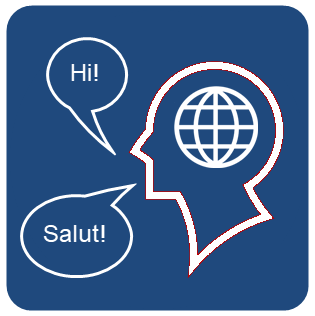 Plain language principles—concise phrasing, active voice, and avoidance of jargon—can significantly improve accessibility for L2 students. Supplementing text with visuals, icons, or infographics enhances comprehension and provides contextual cues that aid retention (Gass & Mackey, 2015). Infographic summaries, timelines, and visual metaphors can transform difficult concepts into accessible entry points for discussion.
Plain language principles—concise phrasing, active voice, and avoidance of jargon—can significantly improve accessibility for L2 students. Supplementing text with visuals, icons, or infographics enhances comprehension and provides contextual cues that aid retention (Gass & Mackey, 2015). Infographic summaries, timelines, and visual metaphors can transform difficult concepts into accessible entry points for discussion.
Inclusive Assessment and Feedback
 Alternative assessment formats such as oral presentations, visual portfolios, or bilingual submissions allow students to demonstrate understanding without being penalized for language limitations. Rubrics should be rewritten in accessible language and accompanied by annotated examples. Feedback should emphasize clarity and encouragement, focusing on content knowledge rather than surface language errors.
Alternative assessment formats such as oral presentations, visual portfolios, or bilingual submissions allow students to demonstrate understanding without being penalized for language limitations. Rubrics should be rewritten in accessible language and accompanied by annotated examples. Feedback should emphasize clarity and encouragement, focusing on content knowledge rather than surface language errors.
Additionally, co-creating rubrics with students can demystify academic expectations and empower learners. Feedback loops that involve L2 students in their own assessment interpretation foster metacognitive growth and academic confidence.
Digital Tools and Technologies
Captioning and Subtitling Tools
![]() Platforms like Kapwing (n.d.), YouTube Studio (Google, n.d.), and Amara (Participatory Culture Foundation, n.d.) allow educators to edit auto-generated captions and provide multilingual subtitles. These tools enhance access to course videos for L2 learners and support repeated, self-paced engagement with content. Educators can also assign caption editing as a collaborative learning activity, enhancing both comprehension and media literacy.
Platforms like Kapwing (n.d.), YouTube Studio (Google, n.d.), and Amara (Participatory Culture Foundation, n.d.) allow educators to edit auto-generated captions and provide multilingual subtitles. These tools enhance access to course videos for L2 learners and support repeated, self-paced engagement with content. Educators can also assign caption editing as a collaborative learning activity, enhancing both comprehension and media literacy.
Text-to-Speech and Speech Recognition
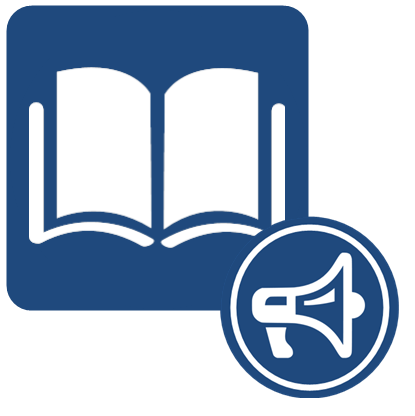 Text-to-speech (TTS) tools such as NaturalReader (NaturalSoft, n.d.) and Read&Write (TextHelp, n.d.) help students process dense academic texts. Speech-to-text tools like Dragon Dictation (Nuance Communications, n.d.) aid learners who prefer to verbalize their ideas. Both support multisensory learning pathways (Chen & Yao, 2016). Embedding these tools in LMS environments reduces barriers and fosters independent learning.
Text-to-speech (TTS) tools such as NaturalReader (NaturalSoft, n.d.) and Read&Write (TextHelp, n.d.) help students process dense academic texts. Speech-to-text tools like Dragon Dictation (Nuance Communications, n.d.) aid learners who prefer to verbalize their ideas. Both support multisensory learning pathways (Chen & Yao, 2016). Embedding these tools in LMS environments reduces barriers and fosters independent learning.Accessible Document Design
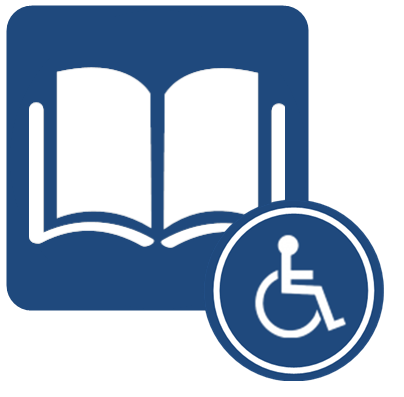 Using heading styles, alt text, and semantic tags in Word and PDF files enables better navigation, especially for learners using screen readers or mobile devices. Documents that follow WCAG guidelines improve access for all learners, not just those with visual impairments. Standardizing accessibility practices through templates and faculty training ensures widespread adoption.
Using heading styles, alt text, and semantic tags in Word and PDF files enables better navigation, especially for learners using screen readers or mobile devices. Documents that follow WCAG guidelines improve access for all learners, not just those with visual impairments. Standardizing accessibility practices through templates and faculty training ensures widespread adoption.
Adaptive Learning Platforms and AI Support
 AI-powered tools like Grammarly (n.d.) or QuillBot (n.d.) offer real-time grammar suggestions, helping L2 students edit their writing. Adaptive platforms that modify reading levels or highlight key terms can also support differentiated learning. However, over-reliance on these tools risks decontextualizing language learning unless accompanied by critical digital literacy instruction.
AI-powered tools like Grammarly (n.d.) or QuillBot (n.d.) offer real-time grammar suggestions, helping L2 students edit their writing. Adaptive platforms that modify reading levels or highlight key terms can also support differentiated learning. However, over-reliance on these tools risks decontextualizing language learning unless accompanied by critical digital literacy instruction.
Faculty must teach students how to use these tools critically—recognizing their limitations and biases—to ensure that AI augments rather than replaces genuine learning processes.
Faculty Training and Institutional Responsibilities
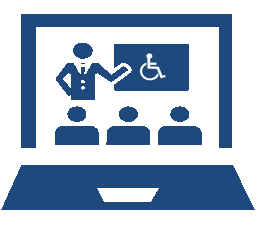 While technological tools and instructional design frameworks provide robust solutions, their effectiveness ultimately relies on faculty implementation. Many educators remain unaware of accessibility standards or feel unequipped to integrate them into their course design. Institutions must prioritize ongoing professional development that focuses on practical accessibility strategies. Smith (2021) proposes a structured framework to support faculty in developing inclusive digital environments. These include creating accessible Word and PDF documents, adding accurate closed captions to videos, simplifying LMS navigation, and applying UDL principles. Faculty training should not be limited to optional workshops (Seok et al., 2018) but embedded in onboarding processes and annual evaluations. Furthermore, fostering a culture that values inclusion—rather than compliance—can lead to more sustained engagement. Universities must support faculty by allocating time, resources, and incentives for accessibility-focused course design.
While technological tools and instructional design frameworks provide robust solutions, their effectiveness ultimately relies on faculty implementation. Many educators remain unaware of accessibility standards or feel unequipped to integrate them into their course design. Institutions must prioritize ongoing professional development that focuses on practical accessibility strategies. Smith (2021) proposes a structured framework to support faculty in developing inclusive digital environments. These include creating accessible Word and PDF documents, adding accurate closed captions to videos, simplifying LMS navigation, and applying UDL principles. Faculty training should not be limited to optional workshops (Seok et al., 2018) but embedded in onboarding processes and annual evaluations. Furthermore, fostering a culture that values inclusion—rather than compliance—can lead to more sustained engagement. Universities must support faculty by allocating time, resources, and incentives for accessibility-focused course design.
Institutions must also adopt systemic strategies that embed linguistic accessibility within broader equity, diversity, and inclusion (EDI) policies. Establishing interdisciplinary accessibility committees—including instructional designers, technologists, faculty, and L2 students—can ensure multiple perspectives inform course design. Additionally, accessibility audits should include language comprehension criteria, not only visual or structural standards. Cross-departmental collaboration between EAP (English for Academic Purposes) experts and curriculum designers can bridge the gap between language support services and mainstream content delivery. These efforts can ensure L2 learners are not treated as an afterthought, but as a central consideration in the pursuit of inclusive excellence.
Limitations and Future Directions
 This chapter primarily draws upon existing literature and policy analysis, which may not fully capture the lived experiences of diverse L2 learners. The findings are grounded in secondary sources rather than direct empirical data, which limits generalizability. Future research could adopt participatory action methodologies, engaging L2 learners in co-designing accessible learning resources. Additionally, mixed-method studies that examine the impact of specific tools—such as bilingual captioning systems or AI-driven scaffolding platforms—on learning outcomes would enhance our understanding.
This chapter primarily draws upon existing literature and policy analysis, which may not fully capture the lived experiences of diverse L2 learners. The findings are grounded in secondary sources rather than direct empirical data, which limits generalizability. Future research could adopt participatory action methodologies, engaging L2 learners in co-designing accessible learning resources. Additionally, mixed-method studies that examine the impact of specific tools—such as bilingual captioning systems or AI-driven scaffolding platforms—on learning outcomes would enhance our understanding.
Another underexplored area is how cultural perceptions of disability and accessibility influence the effectiveness of current strategies. For example, in some cultural contexts, requesting accommodations may carry stigma, which influences how L2 learners engage with support services. Researchers should also investigate how institutional language ideologies shape the way accessibility is implemented, for instance, whether multilingualism is embraced or constrained by dominant academic norms. Expanding research in these directions will deepen our insight into equity-driven instructional design and help build more inclusive academic ecosystems.
Conclusion
Second language learners face complex, multilayered accessibility challenges in digital higher education. Addressing these challenges requires a shift from reactive accommodations to proactive, systemic design strategies. By applying UDL, embracing linguistic inclusivity, leveraging assistive technologies, and embedding accessibility into institutional policy, higher education can move toward a more just and equitable digital learning environment for all learners.
Accessibility is not a checklist but a value system. To support L2 learners, institutions must adopt an intersectional lens—understanding how language intersects with race, class, and migration status—to dismantle structural barriers and affirm all students’ right to learn and thrive.
References
Al-Azawei, A., Serenelli, F., & Lundqvist, K. (2016). Universal Design for Learning (UDL): A content analysis of peer-reviewed journal papers from 2012 to 2015. Journal of the Scholarship of Teaching and Learning, 16(3), 39–56. https://doi.org/10.14434/josotl.v16i3.19295
Bianchi, F., & Ciabattoni, T. (2022). Artificial intelligence and second language writing: Benefits and pedagogical implications of automated feedback. Language Learning & Technology, 26(1), 25–42.
Caimi, A., & Antonini, R. (2020). Subtitles and language learning: Principles, strategies, and practical experiences. Peter Lang.
Edyburn, D. L. (2010). Would you recognize Universal Design for Learning if you saw it? Ten propositions for new directions for the second decade of UDL. Learning Disability Quarterly, 33(1), 33–41. https://doi.org/10.1177/073194871003300103
Google. (n.d.). YouTube Studio. https://studio.youtube.com/
Grammarly Inc. (n.d.). Grammarly: AI writing assistance. https://www.grammarly.com/
Kapwing. (n.d.). Kapwing: Online video editor. https://www.kapwing.com/
NaturalSoft Ltd. (n.d.). NaturalReader: Text to speech software. https://www.naturalreaders.com/
Nuance Communications. (n.d.). Dragon speech recognition. https://www.nuance.com/dragon.html
Participatory Culture Foundation. (n.d.). Amara: Caption, subtitle and translate video. https://amara.org/
QuillBot. (n.d.). QuillBot: AI writing and paraphrasing tool. https://quillbot.com/
Seok, S., DaCosta, B., Kinsell, C., & Tung, C. (2018). Faculty perceptions of accessibility in online learning environments in higher education. Journal of Educational Technology Systems, 47(4), 485–508. https://doi.org/10.1177/0047239518805064
Smith, J. (2021). Training faculty for accessible online education: A framework for institutional development. Journal of Postsecondary Education and Disability, 34(2), 123–135.
Texthelp. (n.d.). Read&Write literacy software. https://www.texthelp.com/products/read-write/
Glossary of Key Terms
- Assistive Technology: Tools or devices designed to support learners with disabilities, such as screen readers, speech-to-text software, and alternative navigation systems.
- Culturally Responsive Pedagogy: An approach to teaching that recognizes and builds upon the cultural knowledge, experiences, and learning styles of diverse students.
- Digital Literacy: The ability to use digital tools and platforms effectively for learning, communication, and critical thinking.
- L2 Learner: A student who is learning in a language that is not their first or native language, often used to describe international or immigrant students studying in English-medium higher education.
- Linguistic Equity: The principle that all students, regardless of language background, should have equal access to educational opportunities and success.
- LMS (Learning Management System): A platform such as Canvas or Moodle used in education to deliver digital course content, manage assessments, and facilitate communication.
- Multilingual Captioning: The use of captions in more than one language to support comprehension of video content, particularly for L2 learners.
- Translanguaging : An instructional strategy that allows students to use their full linguistic repertoire—including multiple languages—to make meaning and learn.
- Universal Design for Learning (UDL): A research-based framework for instructional design that provides multiple means of representation, engagement, and expression to accommodate diverse learners.
- WCAG 2.1: The Web Content Accessibility Guidelines (version 2.1), published by the W3C, outlining best practices for making digital content accessible to people with disabilities.
